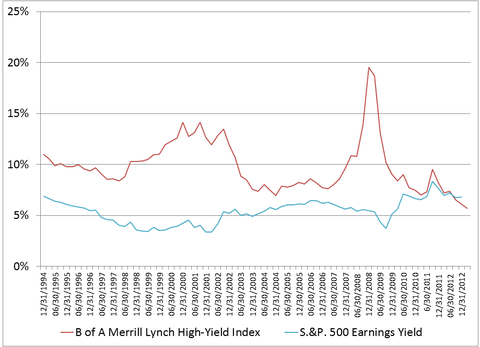Stocks on Wall Street rose on Thursday on strong economic data and a possible large deal between Vodafone and Verizon, while a potential Western military strike on Syria appeared to be delayed for now.
In afternoon trading the major indexes were off their highs for the day: the Standard Poor’s 500-stock index was 0.3 percent higher, the Dow Jones industrial average was 0.2 percent higher and the Nasdaq composite was up 0.8 percent.
Data showed the American economy grew more quickly than expected in the second quarter thanks to a surge in exports. The strong numbers, alongside data suggesting a strengthening in job gains in August, could bolster the case for the Fed to wind down a major economic stimulus program that has been a pillar of the recent rally in equities.
The numbers show the economic recovery may have started in the first half of the year, and the economy is strong enough to allow for the Fed to scale back its stimulus, said Philip J. Orlando, chief equity market strategist at Federated Investors in New York.
Shares of the Vodafone Group traded in the United States jumped 7.5 percent after the company said it was in talks with Verizon Communications to sell its 45 percent stake in their joint venture, Verizon Wireless. Verizon shares rose 2.8 percent.
Merger and acquisition activity “tells us companies have a lot of firepower, the ability to use cash, a lot of debt they could utilize and currency for stock deals, all that is positive” for the market, Mr. Orlando said.
European stocks ended the trading day higher. London’s FTSE 100 gained 0.8 percent, the DAX in Frankfurt was 0.5 percent higher and Paris’s CAC 40 rose 0.7 percent.
Asian markets closed mostly higher, with Japan’s Nikkei up 0.9 percent and the Hang Seng in Hong Kong gaining 0.8 percent. But the Shanghai Composite fell 0.2 percent.
The dollar rose against the yen, though hard-hit currencies in India, Brazil and Indonesia bounced higher against the dollar as their central banks moved to stem capital outflows.
In the oil markets, the reduced likelihood of an immediate major supply disruption allowed United States benchmark oil to drop, but the price picked up in afternoon trading, down just 14 cents a barrel, to $109.96, after its near 4 percent gain over the last two days.
“The market is reassessing the supply implications of the conflict in Syria,” said Eugen Weinberg, global head of commodities at Germany’s Commerzbank.
Gold eased 0.4 percent, to $1,412.40 an ounce, after reaching a three-and-a-half-month high in Wednesday’s flight to safety.

Article source: http://www.nytimes.com/2013/08/30/business/daily-stock-market-activity.html?partner=rss&emc=rss






